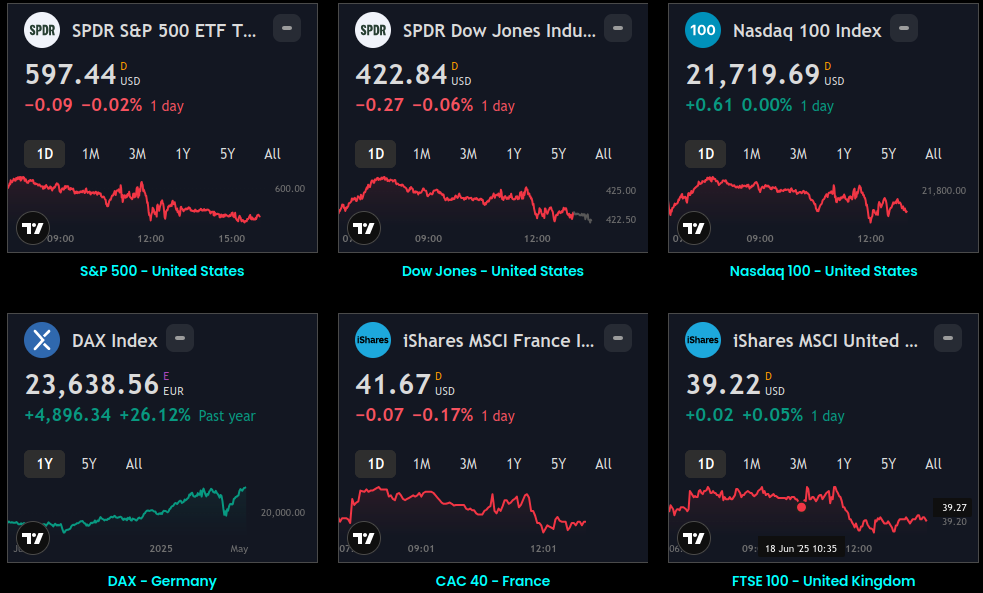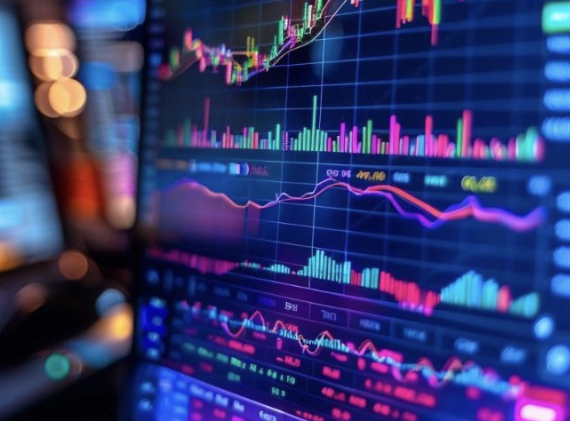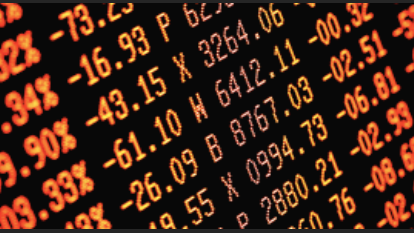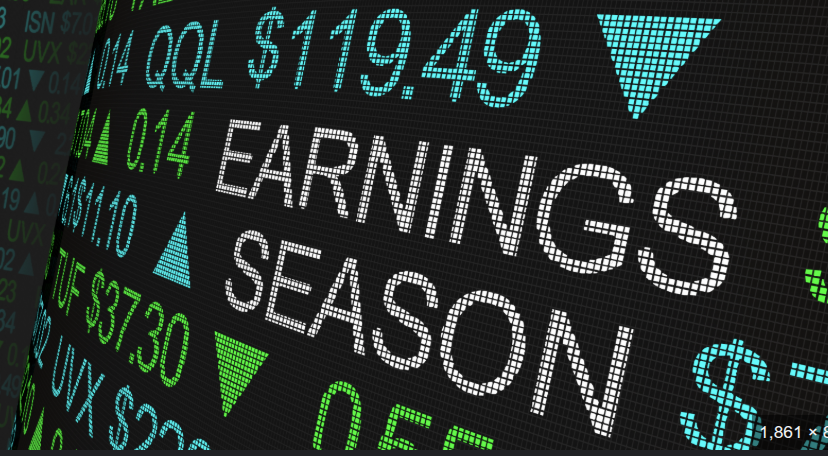WTF Dailies October 03, 2025
US stock futures rose after stocks hit fresh records with Wall Street fixated on the promise of AI even as the government shutdown drags on.

- US stock futures rose after stocks hit fresh records with Wall Street fixated on the promise of AI even as the government shutdown drags on.
- Wall Street would ordinarily be on edge for Friday's release of the September jobs report. However, the government shutdown is all but certain to delay the release of the data, leaving Wall Street in the dark. The next jobs report was especially anticipated as Federal Reserve policymakers have stressed job market weakness as a major factor in their decision on interest rates at their next meeting.
- Meanwhile, the end of the government shutdown remains elusive. Democrats continue to push for the continuation of healthcare subsidies as a condition of funding the government, while Republicans refuse to negotiate on the issue until the government is back up and running. The Senate was out of session on Thursday in observance of Yom Kippur and is set to reconvene on Friday. At the same time, President Trump has continued to ramp up his threats to fire federal workers and defund projects in Democratic-leaning states.
- Asian stocks were a mixed bag on Friday amid regional market holidays and a pullback in technology shares, while Japanese markets rallied to near record highs before a key ruling party vote that will decide the country’s next Prime Minister.
- Japanese markets were boosted chiefly by gains in technology shares, after a partnership between Hitachi and OpenAI ramped up optimism over more artificial intelligence in the country. Cautions commentary from Bank of Japan Governor Kazuo Ueda– who flagged caution over the economy and trade– also aided local stocks.
- Hong Kong stocks, on the other hand, were hit by sharp losses in electric vehicle stocks, which fell tracking an overnight drop in Tesla. Broader tech stocks also faced some profit-taking after strong gains this week.
- Regional markets took some positive cues from Wall Street, which finished higher overnight as strength in tech and sustained optimism over interest rate cuts helped markets look past an ongoing U.S. government shutdown.
- Asian trading volumes were muted on Friday amid market holidays in China and South Korea. Chinese markets will remain closed until the middle of next week.
- Japan’s Nikkei 225 surged 1.6% and was within spitting distance of recent peaks, while the TOPIX added 1.3%.
- Japanese markets were also encouraged by the BOJ’s Ueda flagging some caution over the Japanese economy, especially in the face of U.S. trade tariffs and increased overseas uncertainty. While Ueda did reiterate the BOJ’s stance that interest rates will rise if the economy firms and inflation increases, he flagged increased uncertainties around Japan’s economic outlook. Ueda’s comments suggested an air of caution over the economy that could deter the central bank from raising interest rates immediately.
- Focus in Japan was squarely on a key Liberal Democratic Party vote to be held over the weekend, which will decide the party’s leader and the next Prime Minister of Japan. The vote comes after Prime Minister Shigeru Ishiba abruptly resigned in September, with markets now looking to a less fiscally conservative successor. Front-runners for the role include LDP veteran Sanae Takaichi, farm minister Shinjiro Koizumi, and Chief Cabinet Secretary Yoshimasa Hayashi.
- Hong Kong’s Hang Seng index fell 0.7%, hit by losses in electric vehicle stocks as they tracked an overnight decline in major Tesla Inc (NASDAQ:TSLA). EV stocks fell tracking a 5% overnight fall in Tesla Inc (NASDAQ:TSLA), as markets largely looked past stronger-than-expected third-quarter delivery figures from the company. While deliveries did hit a record high, analysts said this was largely due to U.S. government tax subsidies on EVs, which are set to be revoked soon by the Trump administration.
- Tesla’s China sales also improved, but still reflected bitter competition with local rivals.
- Heavyweight Hong Kong tech stocks also fell on Friday after strong gains earlier this week. The Hang Seng was sitting on a 3.7% gain this week, as it rode a wave of gains in tech stocks.
- Broader Asian markets were a mildly higher, with Singapore’s Straits Times index up 0.2%, while Australia’s ASX 200 rose 0.4%.
- India’s Nifty 50 index fell 0.2% in morning trade, remaining pinned below 25,000 points amid heightened uncertainty over the Indian economy as it grapples with high U.S. trade tariffs.
Market Close
- Despite concerns around the ongoing U.S. government shutdown, stock markets were higher on Friday. The Dow Jones notched a record closing high, outpacing the S&P 500 and the technology-heavy Nasdaq.
- ISM services data came in lighter than expected for September, but the index was at 50, still indicating expansion in the services economy. Of note, the ISM employment index remained in contraction at 47.2, perhaps underscoring some of the recent softening in the U.S. labor market.
- Market expectations for another Fed rate cut in October have moved higher in the last week, up to around 95% according to CME FedWatch, which may also be supporting better market sentiment in recent days.
- Key data on the health of the labor market due out this morning is delayed due to the government shutdown. The Bureau of Labor Statistics has announced that the September jobs report will not be released on time. Forecasts were pointing to 50,000 jobs created in last month, up from just 22,000 in August. The unemployment rate was expected to hold steady at 4.3%, while estimates were calling for 3.7% hourly wage growth year-over-year, also in line with the August figure. With unemployment still relatively low and 7.2 million job openings modestly below the 7.4 million people who are unemployed, the labor market appears to be cooling but not collapsing.
- While there are alternative labor market statistics available, including the monthly ADP private payrolls and Challenger hiring and layoff data, investors and the Federal Reserve will be faced with less transparency on the health of the economy until the government shutdown ends.
- With the current fiscal year ending on September 30 and no funding agreement in place, the government shutdown began on October 1. From an economic standpoint, a shutdown can drive a short-term slowdown in growth but a relatively quick recovery in activity in the subsequent months, as furloughed workers typically receive backpay once operations resume. And from a market perspective, the uncertainty that a potential government shutdown introduces can lead to a short-term uptick in volatility. But as history shows, government shutdowns have had little lasting impact on equity performance. Stocks were positive half the time during the government closures and were higher in most cases three and six months later
Global Indices:

Active Stocks:

Stocks, ETFs and Funds Screener:

Forex:

CryptoCurrency:

Events and Earnings Calendar:

This daily briefing is curated from a wide range of reputable sources including news wires, research desks, and financial data providers. The insights presented here are a synthesis of key developments across global markets, intended to inform and spark thought.
No Investment Advice: This content is for informational purposes only and does not constitute investment advice, recommendation, or endorsement.
Timing Note: Each edition is assembled based on the market context available at the time of writing. Timing, emphasis, and interpretations may vary depending on global developments and publishing windows.
















